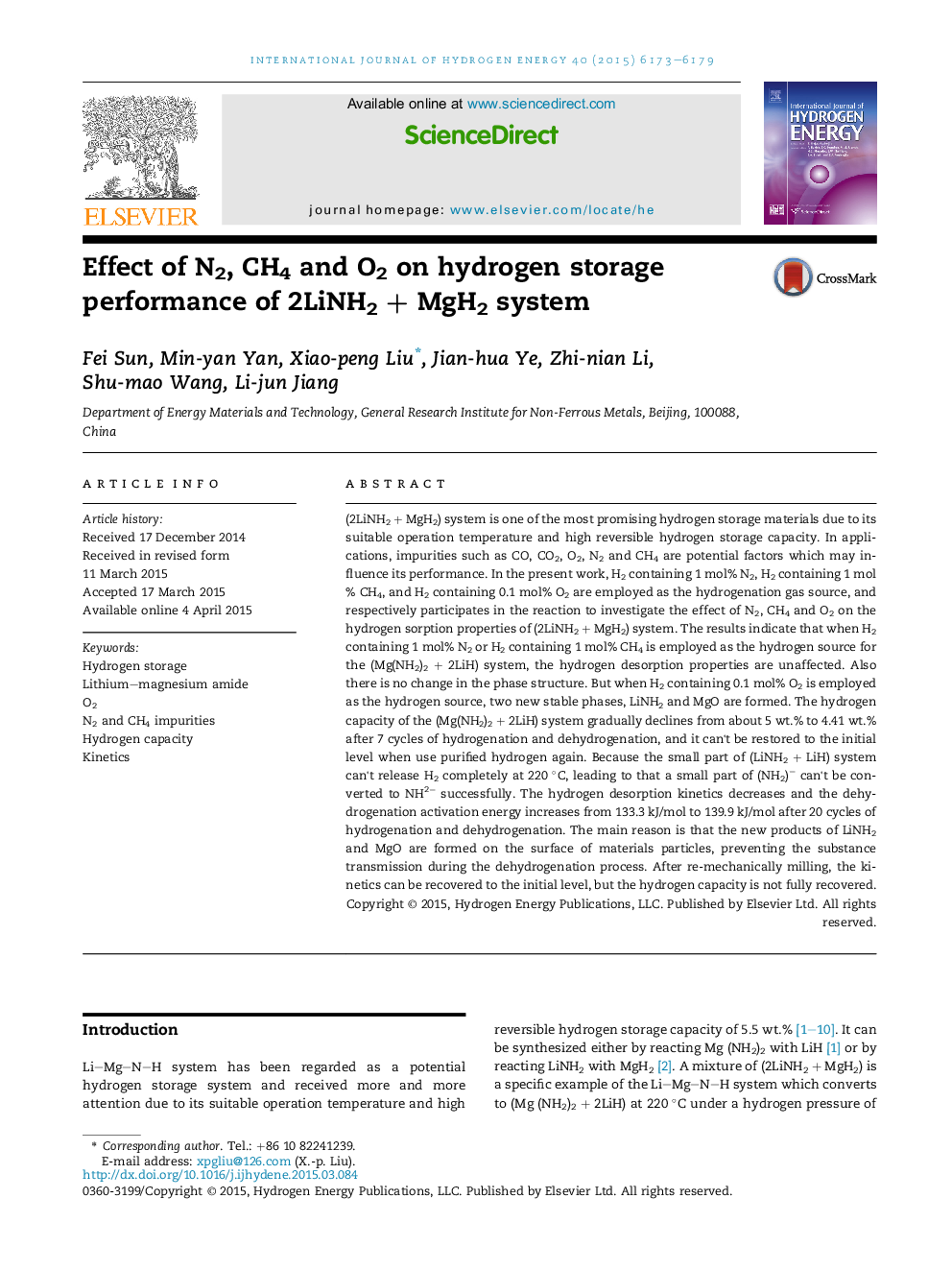| Article ID | Journal | Published Year | Pages | File Type |
|---|---|---|---|---|
| 7715650 | International Journal of Hydrogen Energy | 2015 | 7 Pages |
Abstract
(2LiNH2 + MgH2) system is one of the most promising hydrogen storage materials due to its suitable operation temperature and high reversible hydrogen storage capacity. In applications, impurities such as CO, CO2, O2, N2 and CH4 are potential factors which may influence its performance. In the present work, H2 containing 1 mol% N2, H2 containing 1 mol% CH4, and H2 containing 0.1 mol% O2 are employed as the hydrogenation gas source, and respectively participates in the reaction to investigate the effect of N2, CH4 and O2 on the hydrogen sorption properties of (2LiNH2 + MgH2) system. The results indicate that when H2 containing 1 mol% N2 or H2 containing 1 mol% CH4 is employed as the hydrogen source for the (Mg(NH2)2 + 2LiH) system, the hydrogen desorption properties are unaffected. Also there is no change in the phase structure. But when H2 containing 0.1 mol% O2 is employed as the hydrogen source, two new stable phases, LiNH2 and MgO are formed. The hydrogen capacity of the (Mg(NH2)2 + 2LiH) system gradually declines from about 5 wt.% to 4.41 wt.% after 7 cycles of hydrogenation and dehydrogenation, and it can't be restored to the initial level when use purified hydrogen again. Because the small part of (LiNH2 + LiH) system can't release H2 completely at 220 °C, leading to that a small part of (NH2)â can't be converted to NH2â successfully. The hydrogen desorption kinetics decreases and the dehydrogenation activation energy increases from 133.3 kJ/mol to 139.9 kJ/mol after 20 cycles of hydrogenation and dehydrogenation. The main reason is that the new products of LiNH2 and MgO are formed on the surface of materials particles, preventing the substance transmission during the dehydrogenation process. After re-mechanically milling, the kinetics can be recovered to the initial level, but the hydrogen capacity is not fully recovered.
Related Topics
Physical Sciences and Engineering
Chemistry
Electrochemistry
Authors
Fei Sun, Min-yan Yan, Xiao-peng Liu, Jian-hua Ye, Zhi-nian Li, Shu-mao Wang, Li-jun Jiang,
